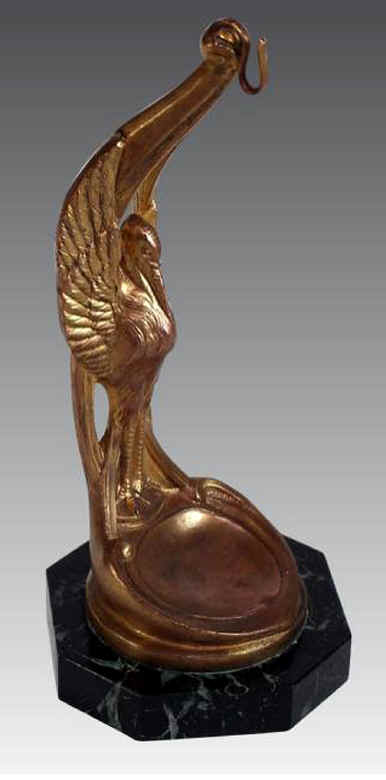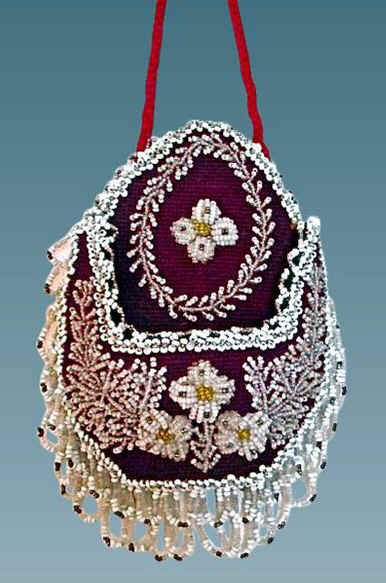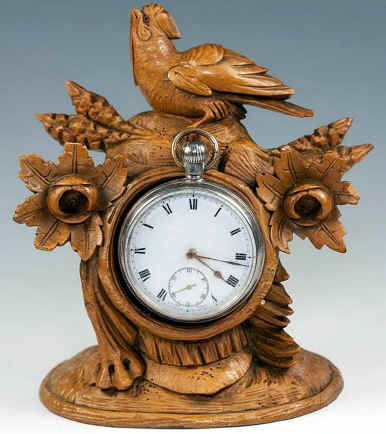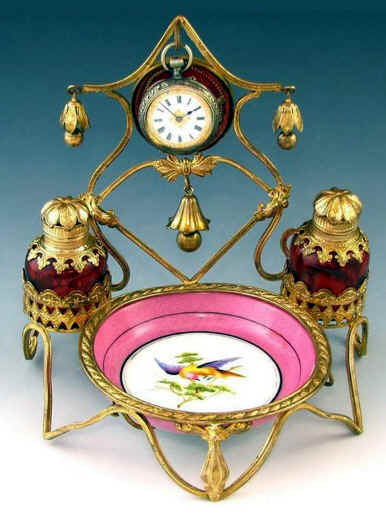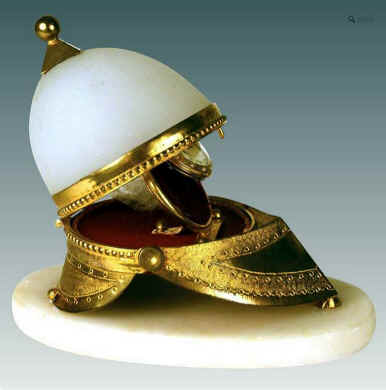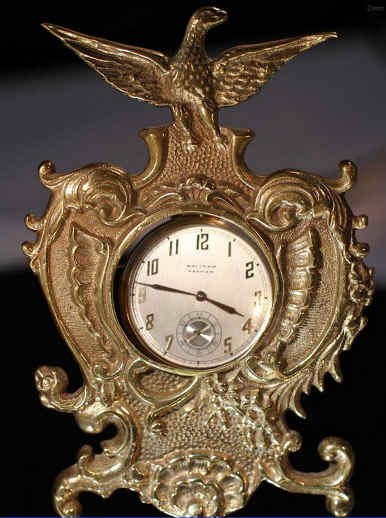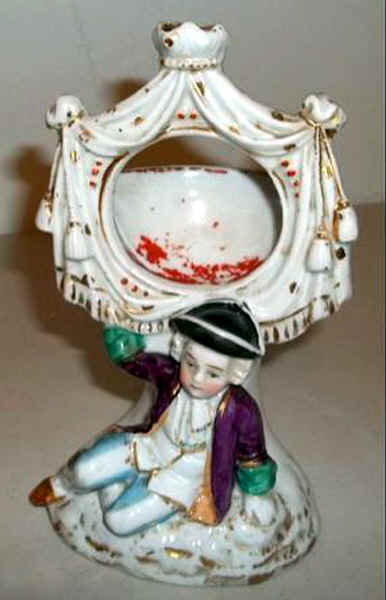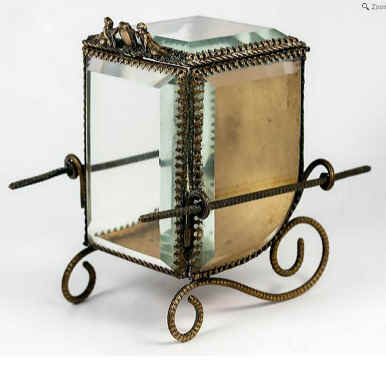|
TIME HANG-UPS
The French called them porte montre, meaning "watch stand." Parisian artisans fashioned ornate watch holders for wealthy travelers visiting Paris on the Grand Tour. Pocket watches were a necessity during this era and fine shops along the Palais Royal specialized in selling unusual and whimsical accessories to house family timepieces at the end of the day. Pocket watch holders spanned all decorative styles, from Neoclassical to Regency and on to the opulence of Napoleon III. After the 1860s, watch holder makers explored styles such as Rococo Revival and Renaissance Revival. As the new century dawned, artisans created beautiful renditions in the styles of Art Nouveau and Arts and Crafts—and by the mid-1920s, Art Deco.
Cast iron was the most common material for making pocket watch holders. Artisans covered these unsightly cast pieces with gilded bronze to simulate gold. Artisans sculpted the original designs to represent forms in nature, such as vines and leaves or figural representations of country life. Mounted on a marble base and standing between seven and eight inches tall, they were quite heavy. Each holder featured either a round frame with a metal pocket in which to place the watch, or a metal hook from which to hang it. Fanciful designs often featured Baroque cherubs.
Parisian artisans created some of the most elaborate pocket watch holders. Resembling a larger version of the famed Limoge porcelain box, these became known as a casque porte montre, or pocket watch casket. These little gems usually often featured a beveled glass box mounted on sculpted brass legs. While some had an eglomise, or back painted view of Paris, most were clear glass. One of the more unusual examples of a watch casket originated during the gilded age of Napoleon III. Made in the form of a soldier's helmet which sits on a white marble base, its hand cut gilded brass is meticulously tooled to form the front and back of the hat. The crown of the helmet is of white opaline, with a gilded brass finial. It has a hand tooled gilded mount at the bottom. The helmet top opens to reveal a pocket watch holder mounted with a gilded brass frame. A "U" shaped hook at the top holds the watch while the interior, lined with red velvet, is typical of this opulent period.
Pocket watch holder makers also produced dramatic designs drawn from nature. On one example, an eagle with its wings outspread and perched on a festoon of arrows and laurel leaves, holds an elongated hook. The top of the piece has a very large cartouche made of two curved cornucopia and a central swan, with neck curved downward, perched on a fleur de lis. A half-moon festoon of laurel leaves flow from one cornucopia to the other. Also originating in Paris is a cast bronze watch holder, designed by 19th-century French artist, Emile Joseph Carlier, featuring a little bird alighting atop a cascading vine of leaves which spill onto the base of the bottom mount. The detail of the little bird—its feathers, sweet expression, and outstretched wings give him a very lifelike appearance. In his beak he holds a curved stick onto which to hang a watch. A half-egg shape bowl, ornamented with leaves and berries, which could hold coins or other jewelry items, rests below him.
While artists created the majority of pocket watch holders to hold the larger watches carried by men, they also designed a number of them specifically for women. A fine example is a 19th-century French vanity perfume caddy, with pocket watch holder and pin dish. Composed of gilt bronze or brass metal, decorative framework encircles a ceramic Sevres style pin dish hand painted with a colorful bird trimmed with pink border. A pair of perfume bottles are of rich cranberry glass, topped by gilt bronze ornamental collars and hinged lids, opening to reveal original tiny glass stoppers. A holder for a pocket watch and three decorative metal tassels or dangles finish off the piece.
Many Victorian women wore chatelaines and hung their diminutive pocket watches from them. Most were about 8 inches long, with a top central portion fixed to a belt hook on the back and a traditional watch hook on the front.
Travelers on the Grand Tour would have also visited England where they would have discovered delightful pocket watch holders made by the potteries of Staffordshire. Featuring miniaturized figures similar to those on larger Staffordshire pieces, these watch holders often featured women and children in folksy scenes, much like their larger counterparts. One features a boy, his hair coifed in powdery white curls, wearing a black tri-corner hat, a long purple coat with green cuffs along with a white vest and blue pants, sitting and holding up the watch holder.
Some pocket watch holders imitated larger clock cases, only in miniature. Each evening the pocket watch owner placed his watch into the hole where the clock face would be for protection through the night. As an avid collector of a variety of antiques and collectibles for the last 20 years, Bob Brooke knows what he’s writing about. Besides writing about antiques, Brooke has also sold at flea markets and worked in an antique shop, so he knows the business side too. His articles have appeared in many antiques and consumer publications, including British Heritage, Antique Week, Southeastern Antiquing and Collecting Magazine, www.OldandSold.com, and many others. To read more of his work, visit his main website at www.bobbrooke.com or his specialty antiques site at http:// www.theantiquesalmanac.com |
|
|
